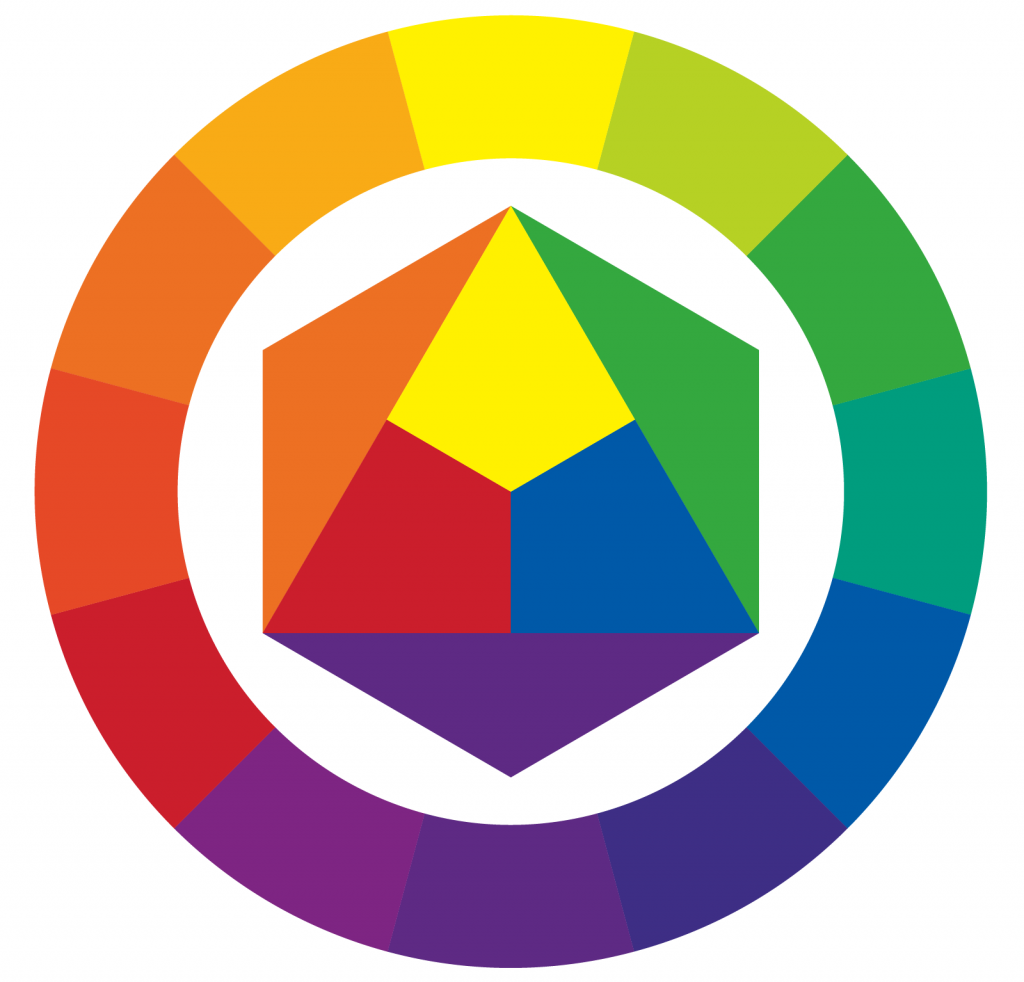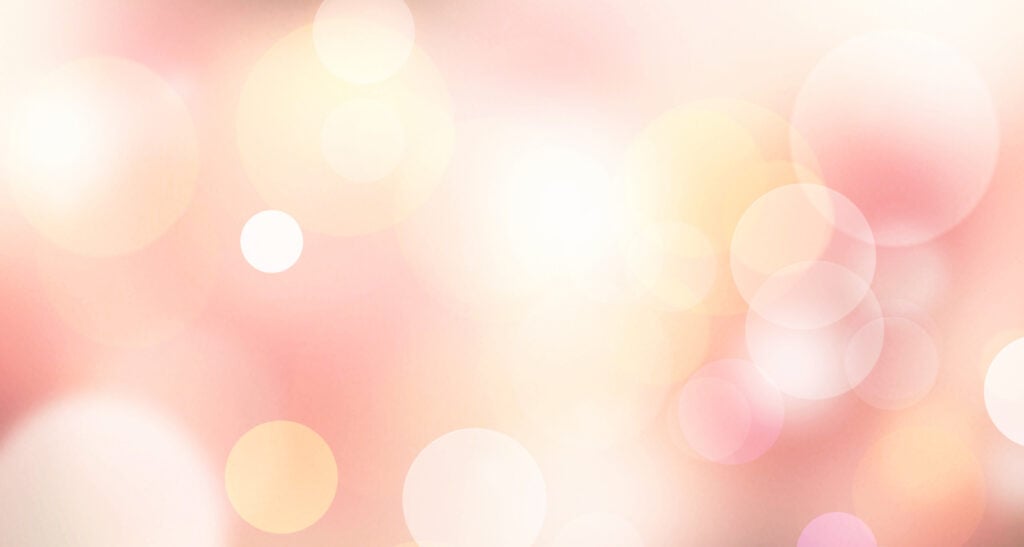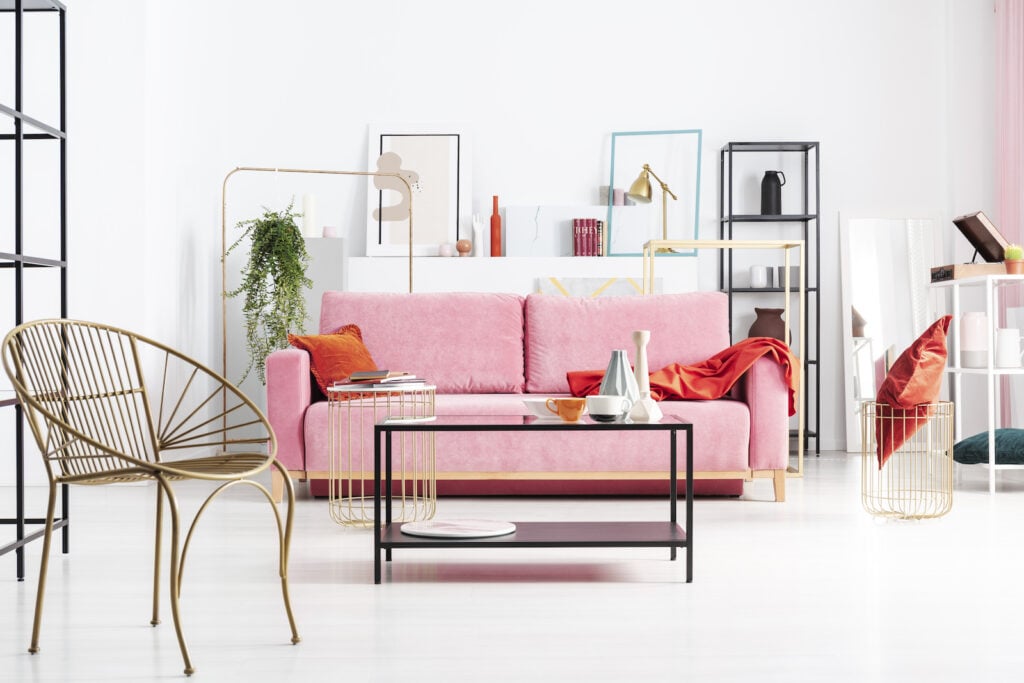
Pink and orange are two colors that are commonly seen in beautiful sunsets. As it turns out, they mix together to create a hue that’s just as lovely.
So, what happens when you mix orange and pink together? Does the result differ depending on the type of mixing you’re doing? Let’s find out!
What Color Do Orange and Pink Make in Paint?
If you mix orange and pink paint, you’ll get peach. Since pink is a lighter version of red, it’s like mixing red and orange paint together, only you’ll get a much lighter result instead. You can use different types of orange and pink to get unique results, but it will always end up being a tint or shade of peach, which is a pink-orange color.
Understanding the RYB Color Model

RYB is the color model that most people learn about in early art classes. It’s a form of subtractive color mixing that’s used for physical art mediums like paints, pastels, and colored pencils.
The primary colors are red, yellow, and blue. Combinations of those colors can mix together to create the other colors on the color wheel, including the secondary colors, which are orange, green, and purple. If an equal amount of all three primary colors are mixed together, they make brown.
Making Peach Lighter or Darker
Peach is a lovely and calming color, but it might not be exactly what you’re looking for. Here are some tips on how you can make peach a bit lighter or darker, depending on what you’re looking for.
Mixing Tints
A lighter version of a color is called a tint. If you want to make a tint of peach, you add white. Starting with lighter versions of the colors, such as yellow-orange or bubblegum pink, will also give you a lighter result.
Mixing Shades
On the other hand, shades are darker versions of a color. A shade of peach can be made by adding a hint of black to the mixture. Yet, a little black paint can go a long way, so only use it sparingly. Using darker colors to begin with, such as burnt orange or magenta, can also darken the mix.
Peach Color Meaning

The color peach doesn’t have that many well-known meanings, but it’s often associated with calmness, manners, and communication. It sometimes triggers feelings of elegance and romance. It might also share some meanings with the colors it’s mixed with.
Orange symbolizes youth, optimism, and enthusiasm. It makes people feel uplifted and encouraged, and it promotes good communication. Pink is a color of love, compassion, and playfulness. It makes people feel calm, comfortable, and sympathetic. Both colors are full of kind, optimistic meanings, so peach will have a similar effect.
How to Make Orange and Pink Paint
If you run out of orange or pink paint, there are some ways for you to recreate these colors. Orange is an easy color to make because it’s a secondary color on the RYB color wheel. It’s made by combining an equal amount of yellow and red.
Pink is a lighter version of red. So, you can make pink by combining white and red. The more white you add, the lighter the pink will turn out. Then, you can use the colors you’ve created to make peach.
What Color Do Orange and Pink Make in Lights?

Orange and pink are both tertiary colors in lights, so it’s unlikely that you’ll need to mix them together. Yet, if you do, they’ll give you a peach color, much like the one you’ll see in paint. That’s because mixing red and orange lights will give you red with a hint of orange, so using pink instead of red will make the color softer and pinker, which is why it will look peach instead.
Understanding the RGB Color Model
The RGB color model is a form of additive color mixing, which is used for lights and digital displays. When colors are combined on this color wheel, wavelengths are added instead of removed. When mixing lights, the brightness of the lights can also have an impact on the results.
The primary colors are red, green, and blue. Then combinations of those colors can mix to create the secondary colors cyan, magenta, and yellow. Some of the tertiary colors on this model are purple, orange, and pink, which is very different from the RYB diagram. If you combine the three primary colors at full brightness, you’ll get white light.
How Do You Mix Colored Lights?

Mixing colored lights doesn’t require quite as much effort as mixing paints. If you have pink and orange colored lights, you can shine one on top of the other and a new color will appear. However, you can also create a wide variety of colors by layering the three primary colors on top of each other at different brightnesses.
For example, orange can be made with red at full brightness, green at about halfway, and no blue. Pink can be made with red at full brightness, green less than halfway, and blue just over halfway. Layering those two resulting colors on top of each other will create a color that still has a lot of red, not very much blue, and more green than both of the original colors. That combination creates a type of peach.
Like paint mixing, light mixing also involves a lot of experimenting. Changing the brightness of the primary colors can give a colored light an entirely different appearance. So, try testing out a variety of light combinations to get the color you’re looking for. You might be surprised by the variety of hues red, green, and blue can create together.
How Do Our Eyes Perceive Color?

A lot goes on in our eyes when light shines on an object. It all has to do with the wavelengths on the visible light spectrum. Some wavelengths are absorbed into the object when light shines on it, while others reflect off it. The color we perceive the item as being is based on the colors reflecting off it.
On the visible light spectrum, the colors of the rainbow are assigned to different types of wavelengths. On one end, violet has short, frequent wavelengths, while the other end has long wavelengths associated with red. Depending on the properties of an object, certain sized wavelengths will enter the item, while others will bounce toward us. So, if we look at a red apple, red will be the only type of wavelength reflecting off it.
Our eyes have cells that help us perceive these colors. Cones are photosensors in your eyes that function well in bright lighting. They allow you to see the color of things in broad daylight or when a bright light is on in a room. Rod cells work similarly, but they’re more sensitive to light. So, they can help you see colors in dim lighting. Both of these cells work together to help your eyes register what colors they’re seeing.
Using Orange, Pink, and Peach in Design

Orange, pink, and peach are all warm colors that sit near each other on the color wheel. They go well together in designs. Whether it’s a beautiful painting or a vibrant room design, these colors together are sure to give off feelings of youth, optimism, and excitement.
However, they can be a lot to handle all at once. Orange and pink are often bright colors, so they can be a lot to look at if not toned down. Using pastel versions of these colors can be easier on the eyes. You can also pair them with neutral colors, such as brown, tan, and white, to help make a design more appealing. For example, an orange and pink bedspread beside a white nightstand and dresser could work well.
If you’re looking to use these colors by themselves, you can mix up the color combinations a bit. Orange goes well with red, brown, and olive green. If you want it to stand out in a design, you can pair it with its complementary color, which is blue. Pink goes well with lots of colors, including green, blue, yellow, and purple.
Peach is a trickier color since it’s less common. It’s best paired with neutral colors like brown and white. In some cases, it could even go well with certain greens.
Do Pink and Orange Always Make Peach?
Yes, it seems that no matter what medium you mix pink and orange in, you’ll always get some type of peach. That’s because orange and pink are both warm colors that fall on the same side of the color wheel. Thus, they only have two of the primary colors in the mix rather than all three, which is how they result in a pleasant color rather than a murky one.
Not all color mixtures work like this though. Some combinations create a different color in every medium since the color models are so drastically different. A good example is red and green, which makes brown in paint but yellow in lights.
There are so many colors out there, so experimenting with color mixing is the best way to discover them all. Testing out different color combinations could help you find your new favorite colors and give you more ideas on beautiful color designs. So, don’t be afraid to test out new and unusual mixes.



